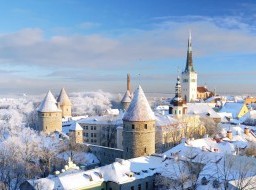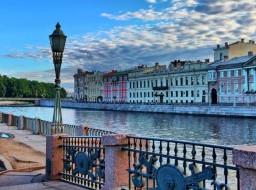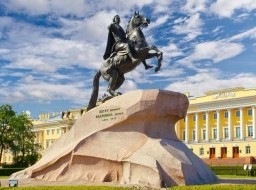Helsinki
Helsinki, the capital of Finland, is a vibrant seaside city of beautiful islands and great green parks. It is situated right in the middle of the Baltic Sea region, with easy access to East and West, and fast access to other European Union countries. Design, architecture, culture and shopping are all great exploration angles and large park areas, forests, lakes, and the coastline with numerous islands sprinkled off it make certain there’s no shortage of natural presence. It is a great place to work and live, stable and safe, with a very high standard of living and welfare. About a quarter of the Finnish population – more than one million people – live in the Helsinki region, which is central to every sphere of Finnish society from public administration, to commerce, arts and sciences. The city’s rhythm is laid back yet at the same time refreshingly active in terms of both the number and quality of restaurants and nightclubs. Nevertheless, much of what is lovable in Helsinki is older. Its understated yet glorious art-nouveau buildings, the spacious elegance of its centenarian cafes, dozens of museums carefully preserving Finnish heritage, restaurants that have changed neither menu nor furnishings since the 1930s: all part of the city’s quirky charm. Helsinki is the second-most northern capital city in the world and was awarded City of Design status by UNESCO. The city probably takes its name after the Vantaa River, which was locally known as Helsingå ("Helsinge River") in the medieval times. Helsinki is a city of many contrasts, appealing to tourists with a multitude of attractions, historic locations, cultural events, and pleasant people. It has four very distinct seasons and temperatures can range from 32 degrees (90 Fahrenheit) in the summer to -20 (-4 Fahrenheit) in the winter. Being compact and flat makes Helsinki a very walkable city, home to thousands of cyclists. It also has a fabulous public transport system, which is free for anyone traveling with a child in a stroller, up to the age of seven. The city comes alive in the summer, with long days that never grow dark. This is when Finns flock to festivals, where the parks are buzzing with people selling homemade cuisine. The winters are long, but Nordic life never stops and ice skating rinks and markets pop up all over the city. Frozen lakes can be skated on, walked on, even cycled on and huge icebreaker ships crack through the frozen Baltic Sea. The city is the cultural, media, and financial capital of Finland, with a 450 year long history visible in several architectural layers and blessed by the influence of different times and traditions. Sweden’s King Gustavus Vasa founded Helsinki on the mouth of Vantaanjoki River in 1550 to compete with Tallinn for Baltic Sea trade. The town grew slowly however, and the centre of Helsinki was moved to its current location in the 1600s. Russia conquered Finland in 1809. The status of Helsinki was raised to capital of the autonomous Grand Duchy of Finland three years later. A monumental Empire-style city plan was drawn up to reflect the power of Russia and the Tsar. Finland became independent in 1917, and Helsinki assumed the demanding new role of capital of the young republic. City planning was characterised by Classicism and Functionalism. Recovering from the hardships of war, Helsinki hosted the Summer Olympics in 1952. The games created an international reputation for Helsinki as an efficient and friendly host city. Helsinki is recognised as a city in which many differing views can interact in a constructive atmosphere. It was the World Design Capital of 2012, making both the country and the Finnish design famous worldwide. Helsinki is located amidst beautiful nature, its modern buildings and technological innovations blending seamlessly into the environment. This is the place where the tradition embraces the modern: in addition to nearby forests, there are a number of beautiful parks in the center with many peaceful and pleasant walks. The city is not crowded, and the traffic is completely smooth. In contrast to many European cities, Helsinki cannot boast a well-preserved medieval city core. Its modern city center was formed during the second half of the 19th century and until the mid-20th century. It presents an interesting blend of the imperial Russian architecture, Eclecticism, and modern 20th century architecture. Notable buildings include the 18th century sea fortress of Suomenlinna; the Helsinki Cathedral, a Finnish Evangelical Lutheran cathedral built from 1830-1852; the Uspenski Cathedral, the largest Eastern Orthodox church in this part of Europe; the Aleksanterinkatu Street, colloquially known as "Aleksi" or "Christmas street"; the Market Square (Kauppatori), one of the most famous market places in the city; the University of Helsinki; the Finnish National Theatre; the Kamppi Center; and so forth. For the last several decades, Helsinki has been considered the triumph of modern architecture. Over the last few years there's been an expansion of new neighborhoods, accompanied by a surge of impressive high-tech buildings. The city has achieved high environmental standards of living, and ecology is a major factor in everyday life. Helsinki is regularly ranked among the best cities of the world based on the quality of life. |









